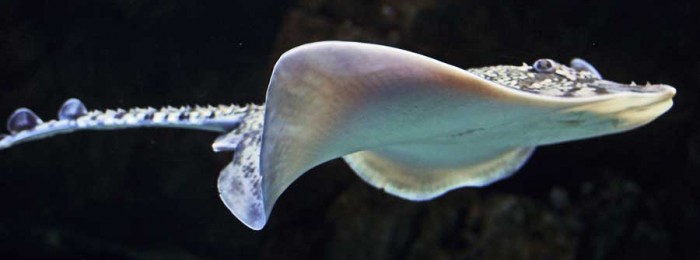01843 585310
info@kentandessex-ifca.gov.uk

01843 585310
info@kentandessex-ifca.gov.uk

Raja clavata Thornback ray has the same general shape as other rays being disc shaped with broad pectoral fins joining the head and body. The tail is long and narrow, approximately the same length as the body.
The upper surface of thornback rays have a number of thrones which increase in size and number as the animal ages. Females typically grow larger than males with maximum lengths of 118 cm and 98 cm respectively. Thornback rays are oviparous and lay eggs inshore between March and September. Females reach sexual maturity later than males at 8.8 and 7.1 year respectively and will produce between 140-160 eggs in a year in sandy or muddy substrate inshore.
Usually found in coastal waters ranging from 10 - 60 m on mixed sea bed types including mud, sand, shingle, gravel and rocky substrates they are known to range into deeper waters. Thornbacks are thought to migrate offshore during winter months and inshore for the summer reproductive season. However number of thornbacks remaining in inshore waters seems to be extending further into the winter months in recent years in the Thames estuary area, with some thought to be resident all year round.
Thornback rays are predominantly feeders of small bottom dwelling crustaceans when juveniles but extend their diet as they grow larger to include larger crustaceans as well as sandeels and small gadoid species. Thornback eggs form an important food source for some fish, while juveniles are preyed upon by larger fish species and adult thornbacks. Kent & Essex IFCA are pleased to be part of the European project INTERREG 2 Seas SUMARiS (Sustainable Management of Rays and Skates). For further information click here Click here to read the KEIFCA Species Management Plan for Thornback Ray
© Kent & Essex IFCA 2025 - All Rights Reserved | Privacy Policy